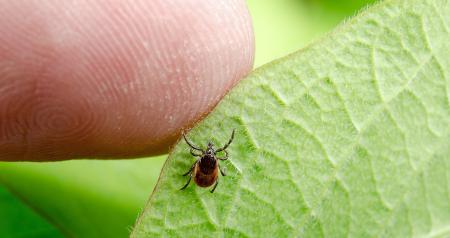Thursday, June 26, 2025
Lyme disease is a tick-borne disease that is carried by black-legged deer ticks. These ticks are usually found in wooded areas with tall grass. The intended target of ticks is usually deer and other woodland animals, but outdoor enthusiasts, hunters, and unsuspecting adventurers are more and more frequently contracting the infectious disease. The number of cases of this tick-borne disease (B. burgdorferi) is constantly rising and the Centers for Disease Control and Prevention fears that the numbers are dramatically under reported, estimating that around 300,000 cases occur every year.
At Stemaid Institute, we have years of experience in treating conditions with pluripotent stem cells. Lyme disease is one of many chronic diseases that we treat. We understand how disabling Lyme disease can be and as such, our quality of care is aimed at helping our patients restore their good health and recover their quality of life!
Symptoms of Lyme Disease
If you catch the infected tick before it burrows into your skin, it's possible to prevent the Lyme disease bacterial infection from taking hold. If the tick has broken the skin, you will notice the common symptom of a bull's-eye rash, a large red circle around the tick bite with a larger circle around the general area. At this point, you will likely need to undergo diagnostic tests and treatment with antibiotics to combat the initial infection, series of secondary infections, and prevent the condition from setting-in long term.
Below is a list of conditions associated with Lyme disease as well as the active infection stages at which they occur:
Early stage Lyme Disease Symptoms (3 – 30 Days)
- Fever & chills
- Muscle aches and joint pain
- Swollen lymph nodes indicating an immune response
- Severe headaches
- Chronic fatigue
- Nausea/vomiting
- Confusion
- Memory loss
- Extreme exhaustion
- Clinical manifestation of Erythema migrans (EM) rash:
- Occurs in approximately 70 to 80 percent of infected persons
- May feel warm to the touch but is rarely itchy or painful
- Disease rash resulting in a bull's eye appearance
- May appear on any area of the body
Long Term Symptoms (+30 days)
- Continued headaches and neck stiffness
- Muscle pain
- Appearance of additional EM rashes on other areas of the body
- Heart palpitations or an irregular heartbeat
- Episodic dizziness
- Inflammation of the brain and spinal cord
- Nerve pain (numb extremities)
- Facial palsy (loss of function in one half of the face)
- Arthritic pain, especially in the knees and other large joints.
- Full body musculoskeletal aches and pains
As you can see, this is a serious condition with persistent symptoms that have the potential to dramatically influence your quality of life. Some patients experience fatigue to such a dramatic effect that they are essentially bedridden anywhere from weeks to months.
Add to that the pain, headaches, and neurologic symptoms such as cognitive impairment and it can be a life-altering experience. Fortunately, there are alternative treatment options that can help you fight this condition and recover your quality of life.
Post-Treatment Lyme Disease Syndrome
Some patients that overcome the initial disease are faced with post-treatment symptoms that cannot be addressed by oral antibiotics or intravenous antibiotic treatment. One of the most likely causes is a chronic infection due to either cystic encapsulation of the initial pathogen or its growth in the form of biofilms which is not affected by antibiotic treatment. Thus long-term antibiotic therapy is not only ineffective but can be harmful.
Patients will also experience long-term physiological changes and chronic accumulation of toxins due to a compromised immune system and detoxification mechanisms, and the regular use of oral antibiotics, antidepressants, and other drugs. To add to that, they will notice a slow degradation of the body functions leading to arthritis, heart problems, and neurological problems affecting the brain and the nervous system. Lyme disease patients can experience continued chronic symptoms of pain, fatigue, or cognitive impairment that lasts for more than 6 months, sometimes years.
Treating Lyme with Stem Cells
At Stemaid Institute we provide a 4 week Lyme Disease standard treatment program that consists of the following:
- 24 Stem Cell IVs
- 24 Day Antimicrobial Therapy
- 10 Day Detox & Vitamin/Peptide IVs
- 4 Ozone EBOO Therapy Sessions
Patients that undertake our alternative treatments using pluripotent stem cells will notice benefits and improvements in three areas. First and foremost is an immediate boost in their immune function, which is critical for combating such a resilient condition. Second, their natural repair mechanisms resume, restoring the proper function of damaged organs and reinvigorating overall health. Lastly, patients will notice remarkable improvements in their neurological function after treatment.
Ready to Learn More About Pluripotent Stem Cells?
If you have more questions about Lyme Disease or our alternative therapies, reach out to the specialists at Stemaid Institute today! If you think you may be suffering from this chronic illness, it is critically important to seek medical care quickly for an accurate diagnosis and the best outcome! Call or book an appointment online with the experts at Stemaid Institute to learn more about our effective treatment for chronic diseases.









